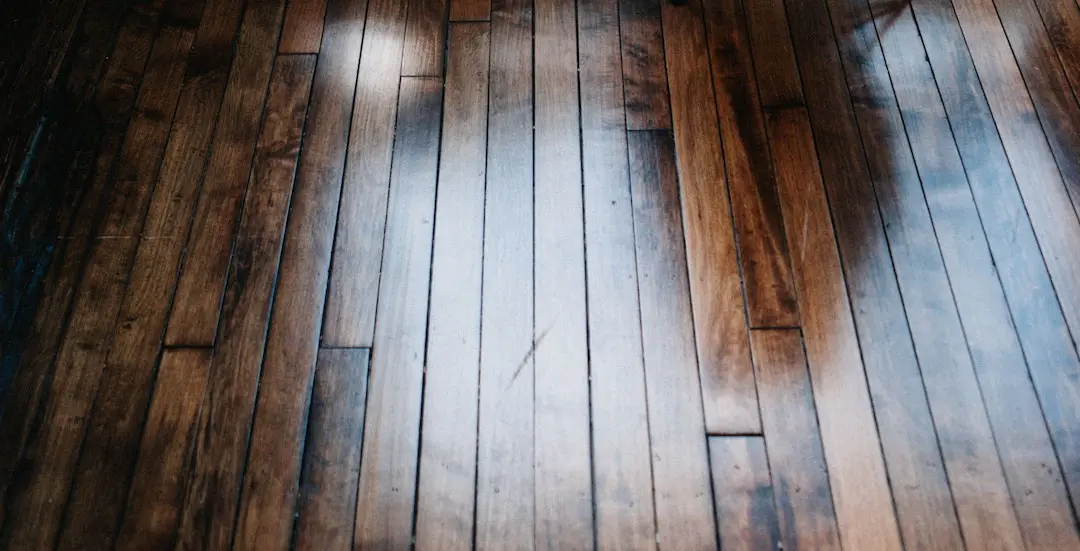
Low energy and energy efficient homes are starting to become the norm for new builds across Ireland and the United Kingdom. More attention is being placed on a building’s envelope, making them easier and cheaper to heat and cool, all while keeping the inside air at a consistent and comfortable temperature. Not only do energy efficient homes cost less to run, they are also healthier to live in as the risk of mould, rot, condensation and indoor air pollution is significantly reduced.
Heat loss through the floor depends on a variety of factors and is not the same for each structure. The amount of heat lost through the ground floor can depend on how many storeys the house has, what the ground floor is made out of, the type of construction (fully detached, semi-detached or terraced house), whether or not the house has a basement and even the type of soil in the area.
While retrofitting floor insulation may be cost prohibitive for an existing home, emphasis should be placed on the home’s entire envelope, include the floor, when building new.
In this article we’ll take a look at the top 5 reasons to install floor insulation when building a new home.
1. You’ll save money on your heating (and cooling) bills
Most homeowners will appreciate a home that doesn’t cost a fortune to run. One of the easiest ways to reduce heating and cooling costs is through insulation. Properly installed insulation will reduce the amount of heat lost through the ground floor and will retain heat for longer periods of time. A sufficiently insulated home means the heating system doesn’t have to work as hard to bring the indoor air up to the desired temperature and will run less often to keep the temperature consistent.
Just think, a poorly or uninsulated ground floor can cause a home to lose 10% or more of its heat!
In addition to insulation it’s a good idea to seal any cracks in the floor or any gaps between the floor and the skirting board, especially if it’s a timber floor.
During the summer months the home will benefit by keeping the cooler air inside and the warmer air out. It’s a win-win situation no matter the season.
2. It can be installed easily when building a new house
Ideally, floor insulation should be installed while the house is being built before the floors go in to place. Retrofitting an existing building can be cost prohibitive, so try to install insulation in the floor right from the beginning. The installation procedure will vary depending on the construction of the home. Some examples include:
- Solid concrete ground floors with insulation below the floor slab
- Solid concrete ground floors with insulation below the floor screed
- Beam and block ground floors with insulation below the floor screed
- Timber ground floors with insulation between the joists
A detailed installation guide can be found in our KORE Floor Insulation Design Guide. Insulation around the perimeter can also be installed to ensure the continuity of insulation and reduce any thermal bridges at common junctions.
Floor insulation may be a more economical solution for retrofitting when major renovations are taking place that require removal or lifting of the floor.
3. You’ll receive all the benefits of expanded polystyrene
If you choose to install or upgrade a home’s floor insulation with expanded polystyrene (EPS), you’ll receive all the same benefits as other EPS insulation products. These benefits include:
- The ability of EPS to meet and exceed current building regulations. For floors the insulation must provide a U-value of 0.21W/m2K or 0.15W/m2K when used in conjunction with an underfloor heating system
- A product that is easy to work with and install. EPS can be cut on-site with a builder’s knife or fine tooth saw. This can be extremely helpful for installations that require cutting to fit between the joists. Leftover EPS can be cleaned up easily and recycled
- Expanded polystyrene floor insulation is sustainable – meaning it will last the lifetime of the building. Once installed it should never have to be replaced. Once the lifetime of the building has been met, the insulation can be removed and recycled
- The compressive strength of EPS makes it suitable for both domestic and commercial applications
- It will not rot or mould and is resistant to moisture and condensation. In fact, it can even be installed in damp conditions without causing problems
If you’ve used EPS before you’ll know its a lightweight and versatile material. It’s incredibly easy to handle and requires no additional safety gear as the material is non-toxic and chemically inert.
4. EPS floor insulation provides low U-values
Those familiar with insulation will know the lower the U-value is the better the thermal efficiency. When calculating the U-value for floors it’s important to note that reference to the construction detail alone is not sufficient. The floor area, perimeter of the wall and the thickness of the wall must be known to calculate the U-value accurately. In the case of a basement perimeter you must also know the area, thickness of the wall and depth of the basement to be included in the calculation. Unused space within the heated space should be included when calculating floor dimensions (ex. storage under stairs), however unheated spaces outside of the building’s insulated fabric should not (ex. garage, porch). Keep in mind the length of the wall between heated and unheated spaces should still be included when calculating the perimeter.
KORE EPS is available in two different grades, standard white and high-density silver. The following U-value calculations take into account a ground thermal conductivity of 2.0W/mK (sand and gravel) and is assumed that perimeter insulation has been installed. An ‘X’ in the following tables means that the product thickness does not meet building regulations in that application. For specific U-value calculations to your project please contact our technical team today! All U-value calculations are in accordance with BS EN ISO 6946:2007.
Solid Concrete Ground Floors – Insulation Below the Floor Slab
1. KORE Floor EPS70 Silver (0.031W/mK) and KORE Floor EPS100 Silver (0.031W/mK)
| Insulation Thickness (mm) | Perimeter/Area (m2) | |||||
| 0.2 | 0.3 | 0.4 | 0.5 | 0.6 | 0.7 | |
| U-Value (W/m2k) | ||||||
| 50 | 0.22 | 0.25 | X | X | X | X |
| 75 | 0.18 | 0.20 | 0.22 | 0.22 | 0.22 | 0.22 |
| 100 | 0.16 | 0.17 | 0.18 | 0.19 | 0.19 | 0.19 |
| 125 | 0.14 | 0.15 | 0.16 | 0.16 | 0.16 | 0.16 |
| 150 | 0.13 | 0.14 | 0.14 | 0.14 | 0.14 | 0.14 |
| 175 | 0.11 | 0.12 | 0.13 | 0.13 | 0.13 | 0.13 |
| 200 | 0.10 | 0.11 | 0.12 | 0.12 | 0.12 | 0.12 |
| 250 | 0.09 | 0.09 | 0.10 | 0.10 | 0.10 | 0.10 |
| 300 | 0.08 | 0.08 | 0.08 | 0.08 | 0.08 | 0.08 |
2. KORE Floor EPS70 White (0.037W/mK)
| Insulation Thickness (mm) | Perimeter/Area (m2) | |||||
| 0.2 | 0.3 | 0.4 | 0.5 | 0.6 | 0.7 | |
| U-Value (W/m2k) | ||||||
| 50 | 0.23 | X | X | X | X | X |
| 75 | 0.20 | 0.22 | 0.23 | 0.24 | 0.25 | 0.25 |
| 100 | 0.17 | 0.19 | 0.20 | 0.21 | 0.21 | 0.21 |
| 125 | 0.16 | 0.17 | 0.18 | 0.18 | 0.18 | 0.18 |
| 150 | 0.14 | 0.15 | 0.16 | 0.16 | 0.16 | 0.16 |
| 175 | 0.13 | 0.14 | 0.14 | 0.15 | 0.15 | 0.15 |
| 200 | 0.12 | 0.13 | 0.13 | 0.13 | 0.13 | 0.13 |
| 250 | 0.10 | 0.11 | 0.11 | 0.11 | 0.11 | 0.11 |
| 300 | 0.09 | 0.09 | 0.10 | 0.10 | 0.10 | 0.10 |
3. KORE Floor EPS100 White (0.036W/mK)
| Insulation Thickness (mm) | Perimeter/Area (m2) | |||||
| 0.2 | 0.3 | 0.4 | 0.5 | 0.6 | 0.7 | |
| U-Value (W/m2k) | ||||||
| 50 | 0.23 | X | X | X | X | X |
| 75 | 0.20 | 0.22 | 0.23 | 0.24 | 0.25 | 0.25 |
| 100 | 0.17 | 0.19 | 0.20 | 0.21 | 0.21 | 0.21 |
| 125 | 0.16 | 0.17 | 0.18 | 0.18 | 0.18 | 0.18 |
| 150 | 0.14 | 0.15 | 0.16 | 0.16 | 0.16 | 0.16 |
| 175 | 0.13 | 0.14 | 0.14 | 0.15 | 0.15 | 0.15 |
| 200 | 0.12 | 0.13 | 0.13 | 0.13 | 0.13 | 0.13 |
| 250 | 0.10 | 0.11 | 0.11 | 0.11 | 0.11 | 0.11 |
| 300 | 0.09 | 0.09 | 0.10 | 0.10 | 0.10 | 0.10 |
5. KORE Floor meets and exceeds building regulations
KORE Floor Insulation can easily meet and exceed buildings regulations of 0.21W/m2K or 0.15W/m2K when used with an underfloor heating system. You should also consult the following design standards regarding the construction of floors:
- BS 8215:1991 Code of practice for the design and installation of dramp proof courses in masonry construction
- BS 8102:1990 Code of practice for protection of buildings against water from the ground
- BRE GBG28 Domestic floors: construction, insulation and damp-proofing
- BRE GG74 Radon protection for new dwellings
- BS 6399-1:1996 Loading for buildings – Code of practice for dead and imposed loads
- BS 8203:2001 Code of practice for the installation floor coverings
- For retrofit applications: NSAI S.R. 54:2014 Code of practice for the energy efficient retrofit of dwellings
KORE Floor also satisfies the requirements of the following Irish Building Regulations:
- Part L – Conservation of Fuel and Energy – Dwellings (2011)
- Part L – Conservation of Fuel and Energy – Buildings other than Dwellings (2008)
In addition, EPS is BRE Green Guide A+ Rated, confirming the sustainability of KORE Floor Insulation.
KORE Floor is certified by NSAI with the Agrement Certificate Number 04/0097 and manufactured to BS EN 13163:2012 under Quality Management approved to EN ISO 9001:2008 Quality Management. Additional technical information on floor insulation made from EPS can be found on the KORE website.
Interested in maximising the energy efficiency of your next new build? KORE Floor can even be used when building to the Passive House Standard! Contact our sales team today and request a no obligation quotation to see how much you can save. Want to insulate the entire foundation of a house? KORE’s Insulated Foundation System is the perfect choice.

